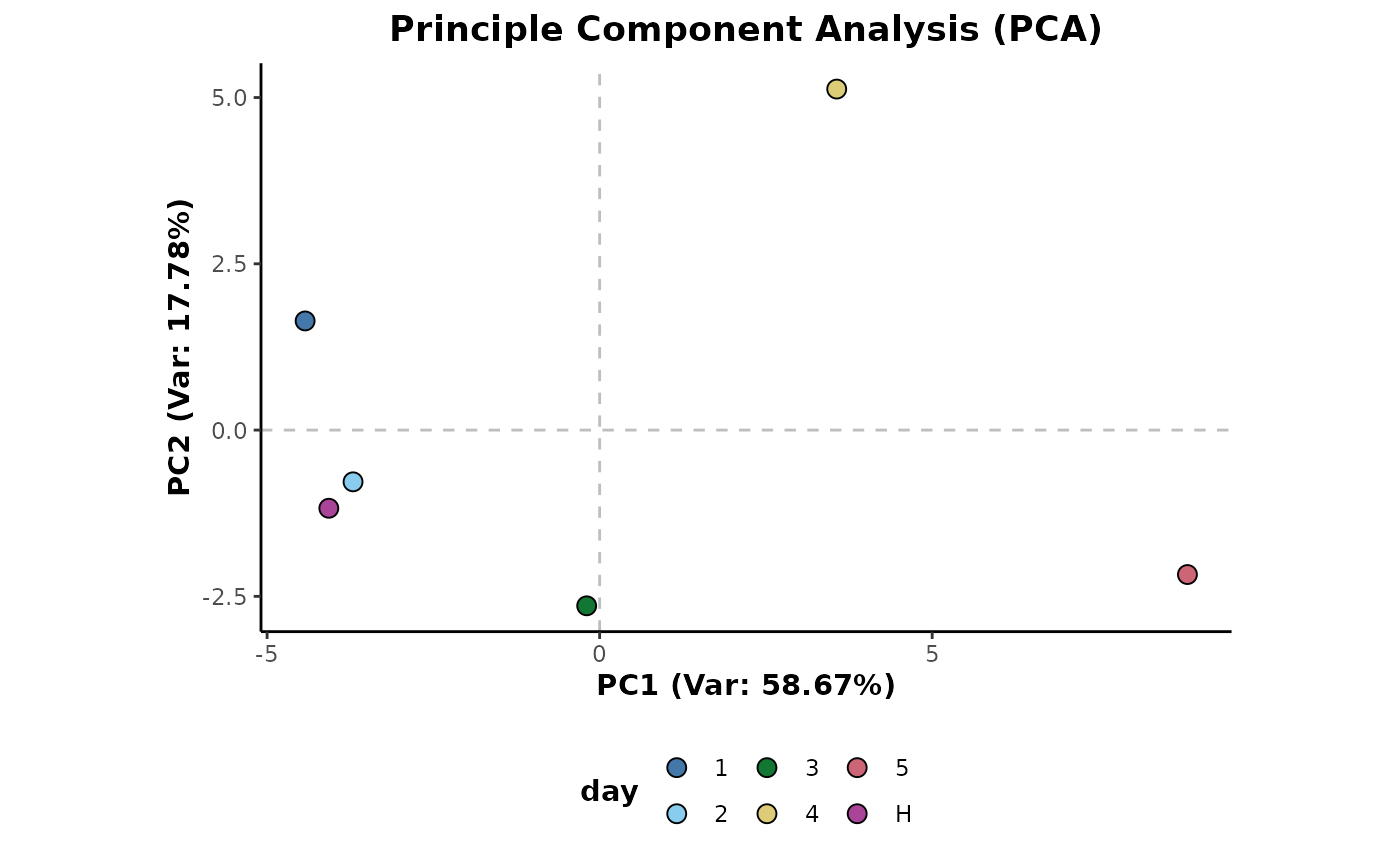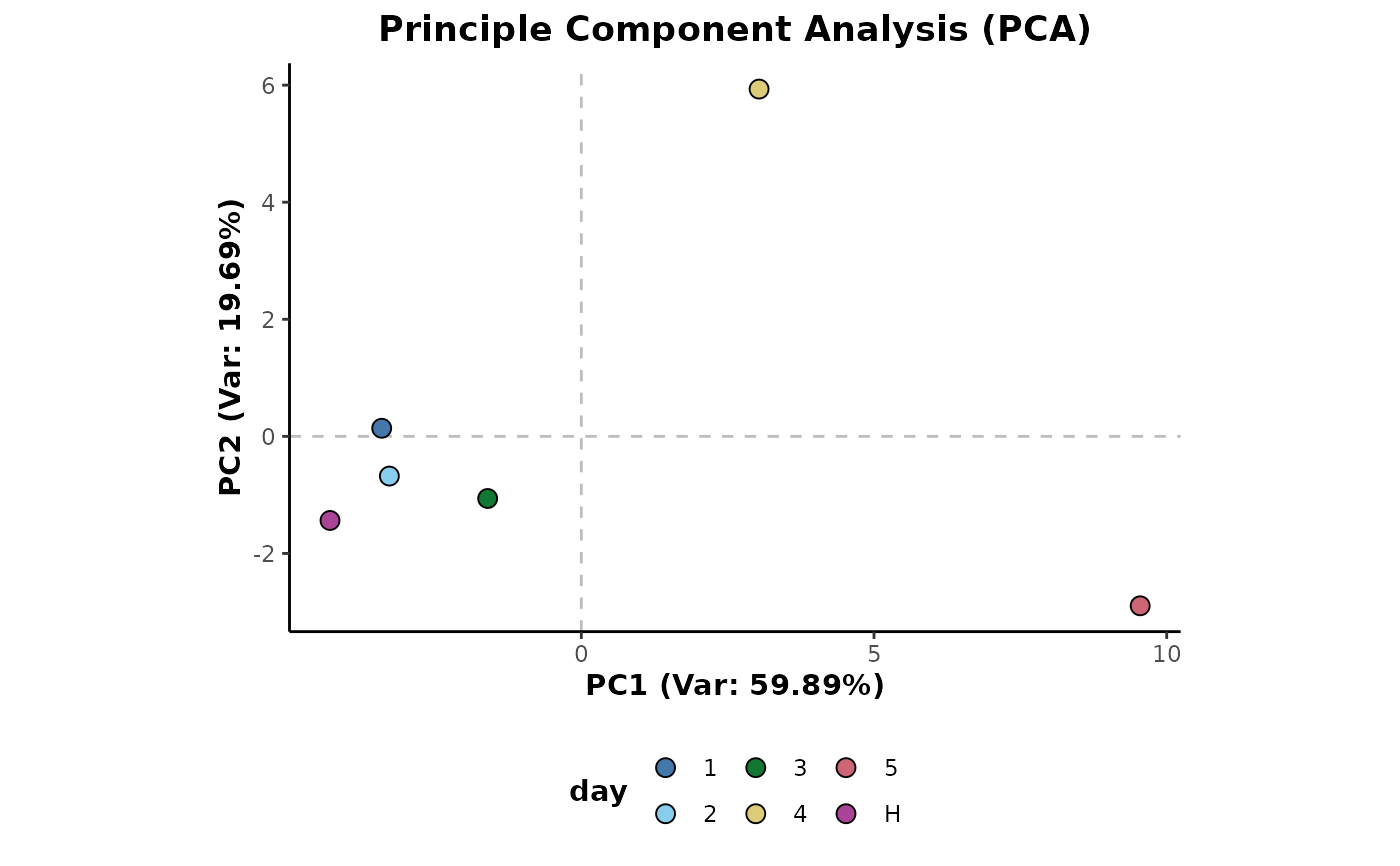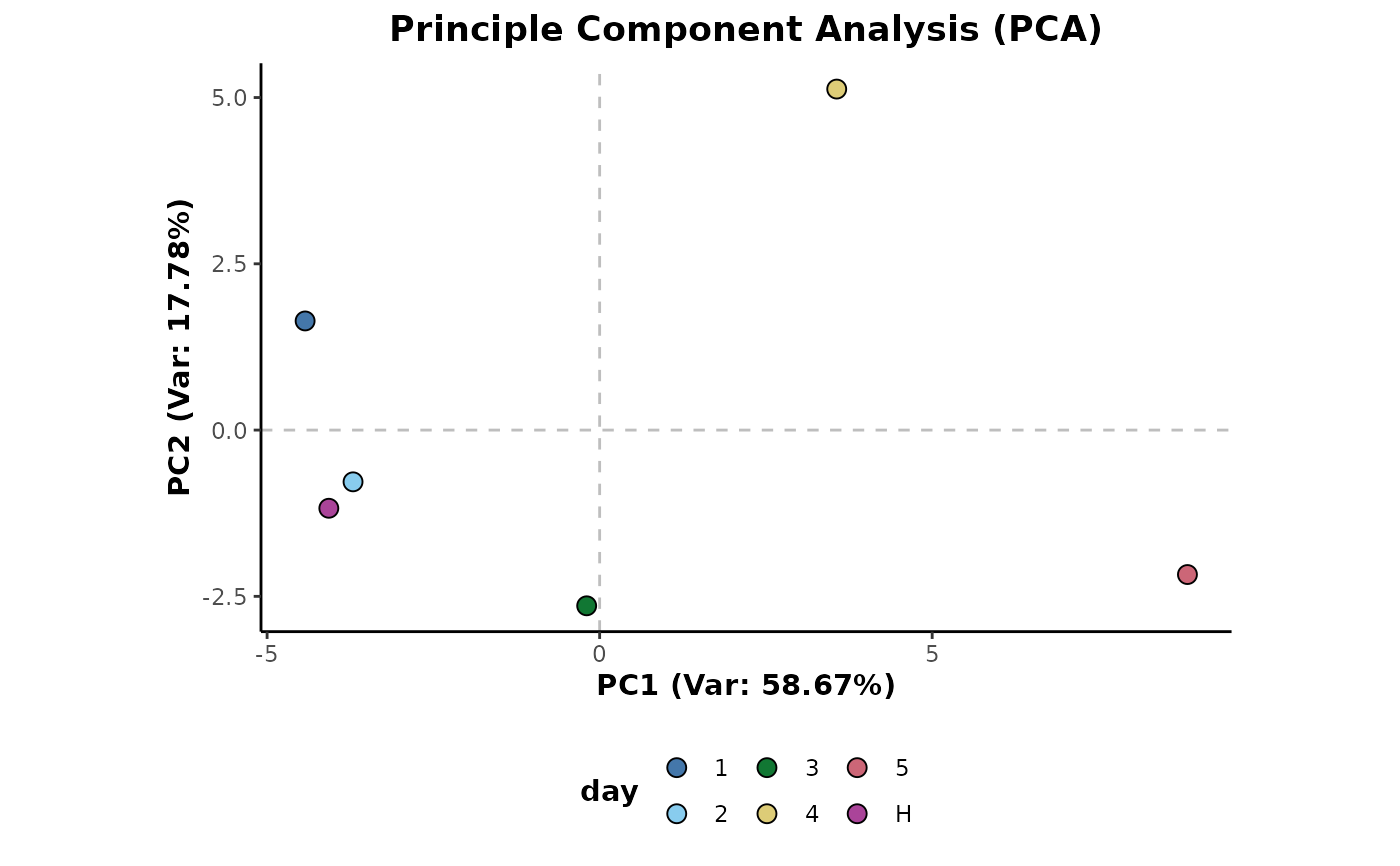Aggregation of sample features based on a grouping variable.
Usage
aggregateMean(d, cls = "class")
# S4 method for AnalysisData
aggregateMean(d, cls = "class")
aggregateMedian(d, cls = "class")
# S4 method for AnalysisData
aggregateMedian(d, cls = "class")
aggregateSum(d, cls = "class")
# S4 method for AnalysisData
aggregateSum(d, cls = "class")Details
Sample aggregation allows the electronic pooling of sample features based on a grouping variable. This is useful in situations such as the presence of technical replicates that can be aggregated to reduce the effects of pseudo replication.
Methods
aggregateMean: Aggregate sample features to the group mean.aggregateMedian: Aggregate sample features to the group median.aggregateSum: Aggregate sample features to the group total.
Examples
## Each of the following examples shows the application of the aggregation method and then
## a Principle Component Analysis is plotted to show it's effect on the data structure.
## Initial example data preparation
library(metaboData)
d <- analysisData(abr1$neg[,200:300],abr1$fact) %>%
occupancyMaximum(occupancy = 2/3)
d %>%
plotPCA(cls = 'day')
 ## Mean aggregation
d %>%
aggregateMean(cls = c('day','class')) %>%
plotPCA(cls = 'day',ellipses = FALSE)
## Mean aggregation
d %>%
aggregateMean(cls = c('day','class')) %>%
plotPCA(cls = 'day',ellipses = FALSE)
 ## Median aggregation
d %>%
aggregateMedian(cls = c('day','class')) %>%
plotPCA(cls = 'day',ellipses = FALSE)
## Median aggregation
d %>%
aggregateMedian(cls = c('day','class')) %>%
plotPCA(cls = 'day',ellipses = FALSE)
 ## Sum aggregation
d %>%
aggregateSum(cls = c('day','class')) %>%
plotPCA(cls = 'day',ellipses = FALSE)
## Sum aggregation
d %>%
aggregateSum(cls = c('day','class')) %>%
plotPCA(cls = 'day',ellipses = FALSE)
